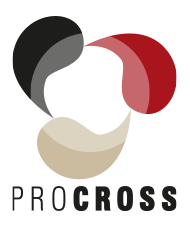Confirmed results for ProCROSS
marzo 23, 2021Press Release : New report confirms crossbred dairy cattle improve fertility without compromising production
marzo 23, 2021Press Release : Lower vet costs and fewer stillbirths in ProCROSS dairy cattle
- New report reveals health treatment costs are lower in crossbred dairy cattle
- Benefits were shown in Holstein x Montbéliarde x Viking Red (now ProCROSS)
- This adds to growing evidence of the benefits of crossbreeding over pure Holstein
- Stillbirths are half the rate in ProCROSS cattle than the purebred Holstein
- Less stature and more body condition may contribute to crossbreds’ longer lifespans
- The report adds to others demonstrating better fertility and similar production
- Further detail on ProCROSS profitability will be published in a future report
TAKE HOME MESSAGES
HEALTH
For 3-breed ProCROSS, total health treatment cost was -26% lower during second lactation ($60 vs. $81) and third lactation ($81 vs. $109).
STILLBIRTH
Stillbirth of 3-breed ProCROSS born to 2-breed crossbred dams was half of their Holstein herdmates at first calving (4% vs. 8%). Likewise, Holstein-sired calves from ProCROSS cows had lower stillbirth than Holsteins at first calving (4% vs. 7%).
SURVIVAL
Almost twice as many 3-breed ProCROSS cows (41%) survived to a fourth calving compared with their Holstein herdmates (22%).
STATURE
The 3-breed ProCROSS cows had shorter stature with more body condition compared with their Holstein herdmates, and this may partially explain their superior fertility and lower health treatment cost.
UDDER CONFORMATION
ProCROSS cows had longer teats & more ideal rear teat placement (less crossing or touching of teats) than Holsteins.
A new report published this month has revealed that crossbred dairy cattle incur significantly lower veterinary and pharmaceutical costs and lower rates of stillbirth than the pure Holstein. The findings were published in the prestigious Journal of Dairy Science (103:10917–10939, November 2020) and follow a succession of similar reports which have demonstrated that crossbred cattle have numerous other health and economic attributes compared with the purebred Holstein.
The trial which revealed this performance was carried out by the University of Minnesota over a period of 10 years. Against the purebred Holstein (HO), it compared the performance of a two- and three-breed cross, based on the Holstein, Montbéliarde (MO) and Viking Red (VR) breeds. These three breeds were found to be highly complementary, and so they have since been used in the development of a structured, three-way crossbreeding programme and marketed under the ProCROSS brand.
The report’s lead author, Dr Amy Hazel, worked with Professor Brad Heins and Professor Les Hansen throughout the trial, enrolling 3,550 Holsteins in 2008, which would be kept in their commercial herds and either be crossed or bred pure. This made it the largest ever trial to assess the benefits of crossbreeding in a commercial situation and through such a highly structured breeding programme.
Vet and med costs
She said: “Total health treatment cost of the two-breed crossbreds was 21-29% lower during the first three lactations compared with their Holstein herdmates. “For the three-breed crossbreds, health treatment cost did not differ during first lactations but was 26% lower during second (US$60 vs US$81) and 26% lower during third lactations (US$81 vs US$109).” The costs for health were based on the sum of veterinary treatments, pharmaceuticals and farm labour costs to treat 16 different health disorders. They also contributed to greater profitability which was the subject of additional research at the University of Minnesota and is expected to be published in detail in the Journal of Dairy Science over the coming months.
Stillbirth rates
The study also investigated stillbirth rates and found the three-breed ProCROSS calves (born to two-breed crossbred dams) had half the stillbirth rate of their Holstein herdmates at first calving (4% vs 8%). Similarly, Holstein-sired calves from three-breed ProCROSS cows had lower stillbirth rates than pure Holsteins at first calving (4% vs 7%). Lifespan was also longer in the crossbred cattle, with almost twice as many three-breed ProCROSS cows (41%) surviving to their fourth calving than their Holstein herdmates (22%).
Conformation
Conformation was also measured across the cattle, with the three-breed ProCROSS found to have shorter stature, less angularity and more body condition than their Holstein herdmates. “These traits could help explain the superior fertility [reported in a separate paper] and lower health treatment cost for the ProCROSS cattle,” said Dr Hazel. Other conformation features found in the three-breed cross included wider rear teats and longer teat length – traits of growing importance in an era of robotic milking and as Holstein teats decline in length.
In fact, Dr Hazel observed: “The three-breed ProCROSS cattle have many of the traits sought by modern dairy producers, who find their cows have too much stature and angularity and lack the robustness of their forebears.”
Stéphane Fitamant, Managing Director for ProCROSS, concurred, and said: “These studies confirm our experience in the field where ProCROSS cattle are rapidly rising in popularity thanks to their ease of management alongside high health and welfare credentials.”
The studies also point to a breeding direction for farmers engaged in crossbreeding, many of whom have struggled to identify a choice of breed after the first cross.
Dr Hazel said: “The 10-year study demonstrates that hybrid vigour – which gives the outcrossed animal better performance than the average of its parents – is maintained at 86% in perpetuity in a three-way crossbreeding programme.”
Furthermore, she says the three breeds chosen are complementary, each conferring attributes which balance another. “For example, the Holstein brings production and udder traits; the Montbéliarde brings fertility, body condition and strength; and the Viking Red brings calving traits, udder health and fertility,” she says. She said: ”It has been very satisfying to find the ProCROSS breeding programme addresses so many of the challenges dairy farmers face today, whether that’s to produce milk more efficiently, cut costs of production or simply achieve better health and welfare. ”Equally, crossbreeding in itself will address the narrowing of bloodlines in the Holstein breed and the resulting inbreeding depression, which mostly affects traits of health, fertility, survival and vigour.
“In a world increasingly focussed on animal welfare and production efficiency, we have a duty to breed these features into our production systems and the Holstein x Montbéliarde x Viking Red has demonstrated how this can be done.”
For more information:
Stéphane Fitamant, Director of ProCROSS: s.fitamant@procross.info
Source
“Health treatment cost, stillbirth, survival, and conformation of Viking Red-, Montbéliarde-, and Holstein-sired crossbred cows compared with pure Holstein cows during their first 3 lactations”, by Dr. Amy Hazel, Dr. Brad Heins, and Dr. Les Hansen from the University of Minnesota, published in Journal of Dairy Science, Volume 103, Issue 11, November 2020, Pages 10917-10939 :
https://www.sciencedirect.com/science/article/abs/pii/S0022030220306652



